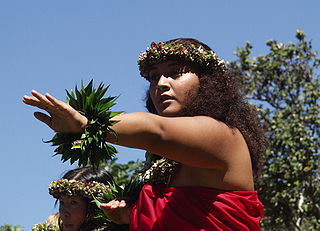Hawaiian Culture: History of the Hula

The Hula Origins
Before written words existed in Hawaii, the primary method of passing information from one generation to the next, were through the traditions of the mele oli (poetic chants) and mele hula (chants with movements). This is where legend points the origins of hula to the goddess Laka. Hula halau (hula schools) were set up near heiau (temples) made in her honour. The students of hula dance lessons were taught the kahlko, the sacred music and dance forms, or classical hula. Rigorous training and strict observation on the stylized delivery of the chants and dances were implemented. The mele hula was performed during religious and ceremonial occasions. Along with this, it also recorded ancestor genealogies, historical events, customs, and legends.
The Hawaiians reasoned that by conjuring physical events through words and body motions they could control them. A wide range of repertoire of chants was produced to glorify every facet of Hawaiian life and legend. Scores of individual motions were added to accompany the mele hula, each one telling a story in itself. A flutter of the hand, a certain sway of the hips or a footstep could be utilized to symbolize a bird, canoe ride, blossom, or rainstorm. Unfortunately, several of these movements, and the ancient mele (chants) had been lost and forgotten by the time Kalakaua rose up to the throne. In less than 50 years, eager missionaries had practically expunged the backbone of Hawaiian history and culture by restraining the native dance form and substituting the traditional mele with Christian hymns.
Reviving the Hula
Kalakaua put together a royal hula troupe to revive old dances and introduce new ones, to keep up with his dual passions for entertainment and things Hawaiian. . He composed much-admired mele, including the state anthem Hawaii Ponoi.
In the 19th century, Hawaiian music went through a sea of change. Since time immemorial, the hula was accompanied by rhythmical chants and fundamental native instruments like drums, simple flutes, wooden sticks, and rattles. Along came the hymn-singing missionaries and the whalers with their ships who then introduced harmonies that the musical Hawaiians took in with zest. They likewise adopted a four-stringed guitar, called the braguinha to the Portuguese immigrants who brought it along with them from Madeira in 1879. This was then renamed the ukulele, or "jumping flea." From this merging of styles and influences, a distinct Hawaiian sound started to emerge.
Related articles:
Best Island Destinations in Hawaii Cruises





